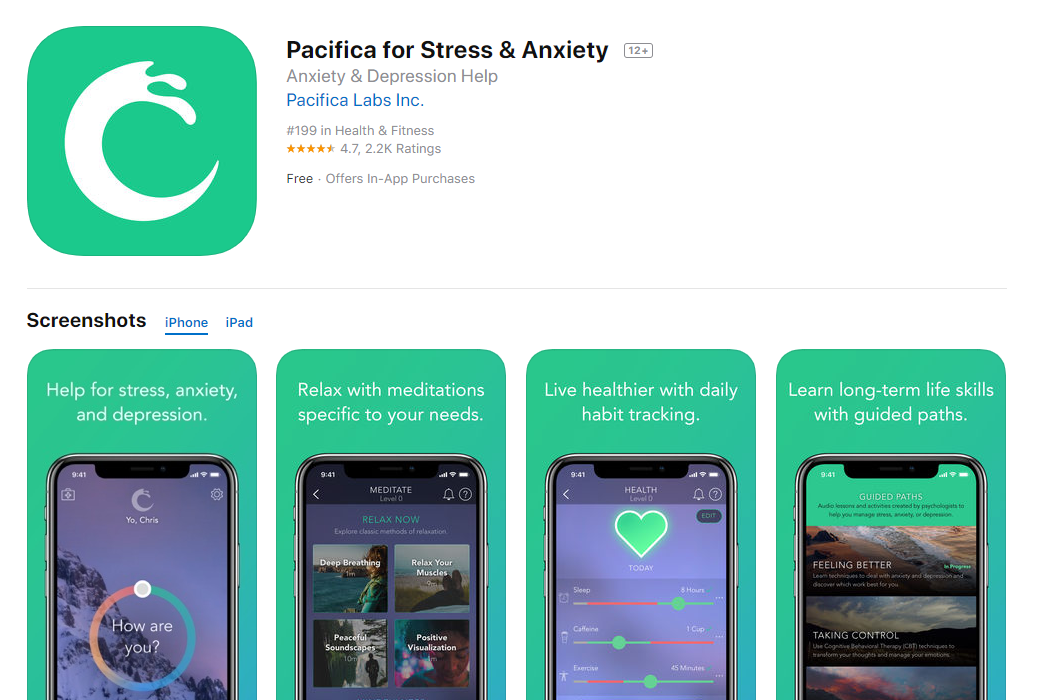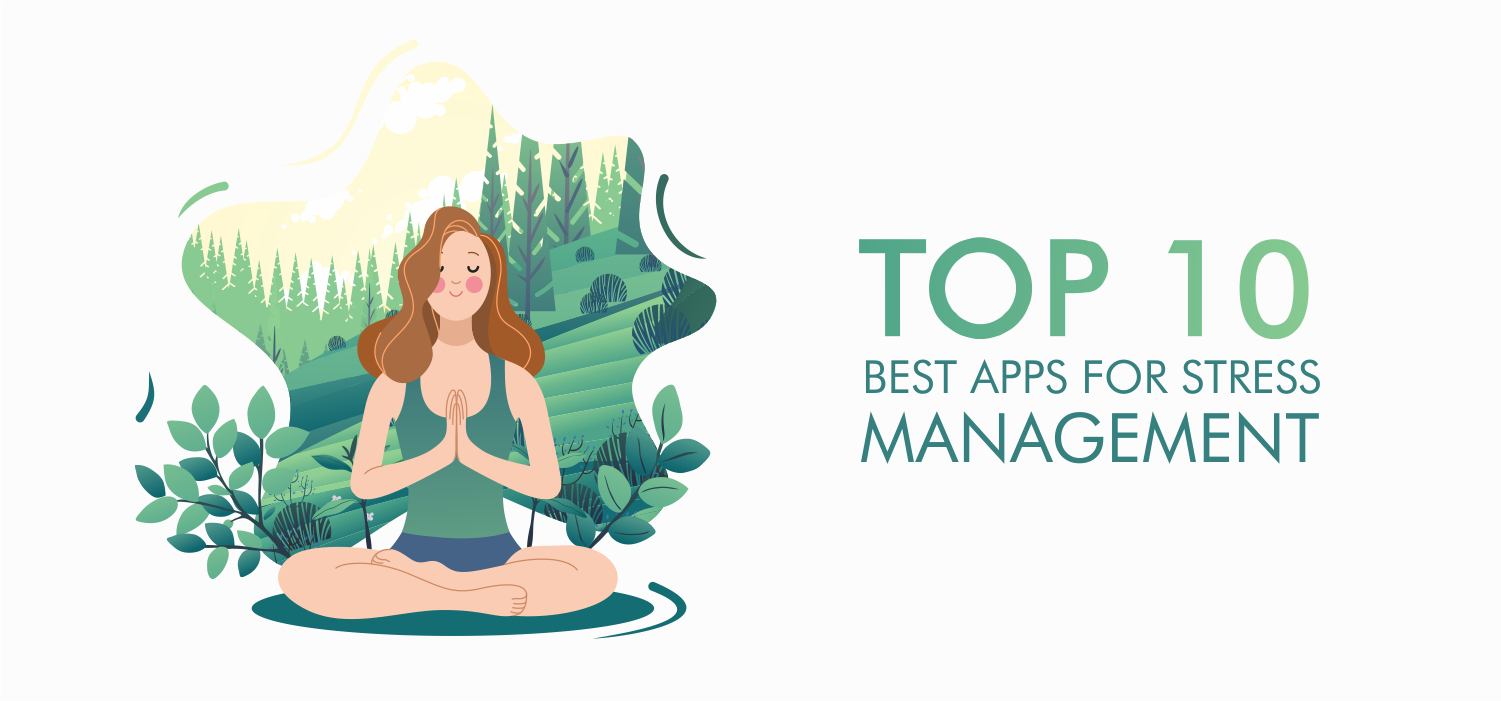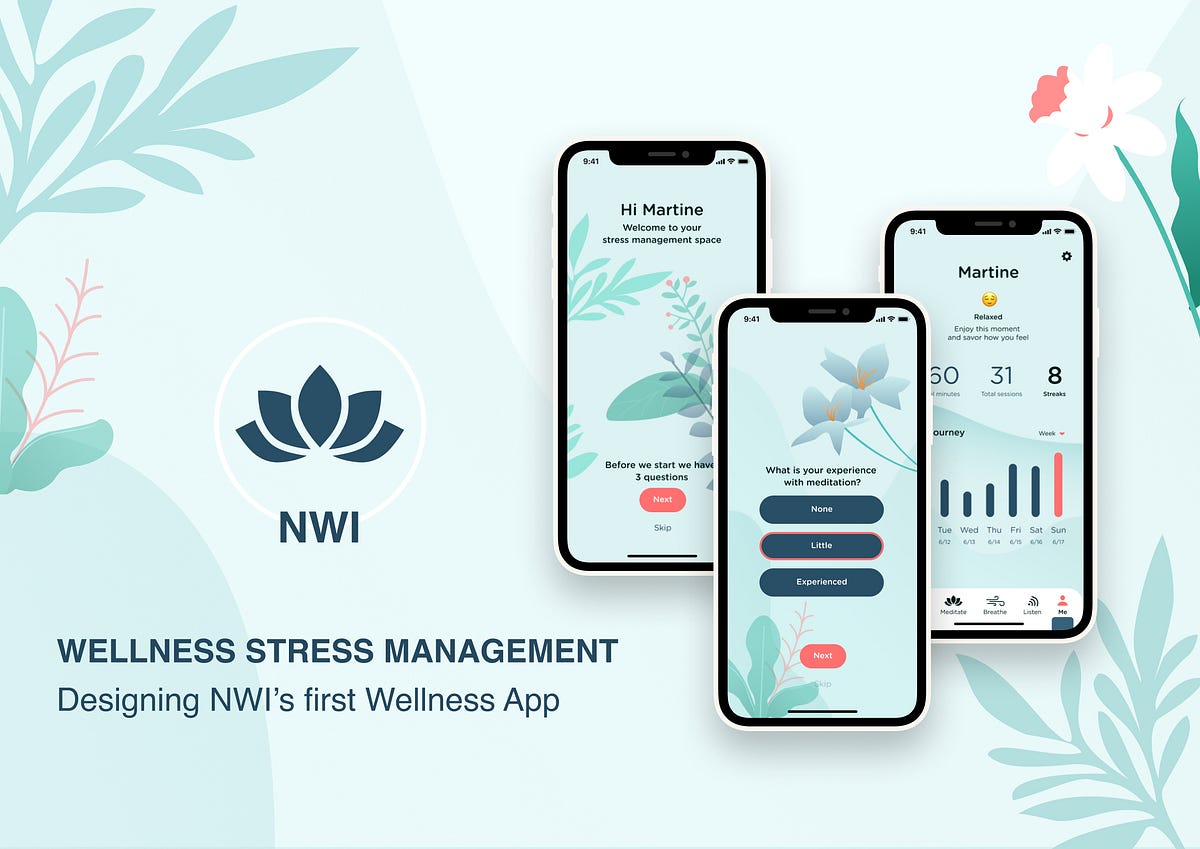Stress management apps are emerging as a powerful tool in the fight against stress, offering a range of techniques to help you relax, unwind, and take control of your well-being. Join us as we delve into the world of these apps, exploring their features, benefits, and how they can revolutionize your stress management journey.
Overview of Stress Management Apps

Stress management apps have emerged as a prevalent tool for individuals seeking to manage stress and improve their overall well-being. These apps utilize various techniques, such as mindfulness, relaxation exercises, and cognitive behavioral therapy (CBT), to help users reduce stress levels, improve sleep, and enhance mental clarity.
The demand for stress management apps has witnessed a significant surge in recent years, driven by the growing prevalence of stress and anxiety disorders. According to the American Psychological Association, approximately 72% of adults in the United States experience significant stress in their daily lives.
This has led to an increased demand for effective and accessible stress management solutions, with stress management apps gaining popularity as a convenient and personalized approach.
Prevalence and Usage, Stress management apps
Numerous studies have demonstrated the effectiveness of stress management apps in reducing stress levels and improving overall well-being. A study published in the Journal of Medical Internet Research found that individuals who used a stress management app for 8 weeks experienced significant reductions in perceived stress, anxiety, and depressive symptoms.
Another study, published in the journal Frontiers in Psychology, reported that individuals who used a mindfulness-based stress management app for 6 weeks showed improvements in sleep quality, emotional regulation, and cognitive function.
Features and Functionality of Stress Management Apps
/BestMentalHealthApps_edit-7b401a8bcf5d49e18e68329d4a572779.jpg)
Stress management apps provide a wide range of features and functionalities to help users manage their stress levels. These features typically include relaxation techniques, mindfulness exercises, and mood tracking.
Relaxation techniquesare designed to help users relax and reduce tension. Some common relaxation techniques offered by stress management apps include:
- Guided meditation:Guided meditation involves listening to a recording that provides instructions on how to focus your attention and relax your body.
- Deep breathing exercises:Deep breathing exercises involve taking slow, deep breaths to help reduce stress and anxiety.
- Progressive muscle relaxation:Progressive muscle relaxation involves tensing and relaxing different muscle groups to help reduce tension and promote relaxation.
Mindfulness exercisesare designed to help users focus on the present moment and reduce stress. Some common mindfulness exercises offered by stress management apps include:
- Body scan meditation:Body scan meditation involves focusing your attention on different parts of your body to help reduce stress and improve body awareness.
- Mindful breathing:Mindful breathing involves paying attention to your breath to help reduce stress and improve focus.
- Gratitude journaling:Gratitude journaling involves writing down things you are grateful for to help reduce stress and improve overall well-being.
Mood trackingcan help users identify patterns in their stress levels and identify triggers that may be causing stress. Some stress management apps allow users to track their mood on a daily basis and provide insights into how their mood is affected by different factors.
By providing a range of features and functionalities, stress management apps can help users manage their stress levels and improve their overall well-being.
Types and Categories of Stress Management Apps

Stress management apps come in a variety of types and categories, each tailored to specific target audiences and needs.
Based on target audience, these apps can be categorized as follows:
General Users
- These apps are designed for individuals of all ages and backgrounds, providing a comprehensive range of stress-reducing techniques and tools.
- Examples include Headspace, Calm, and Insight Timer.
Specific Demographics
- Apps in this category cater to specific groups of individuals, such as students, working professionals, or parents.
- They offer tailored content and features that address the unique stressors and challenges faced by these groups.
- Examples include MindFi (for students), Thrive (for working professionals), and Peanut (for parents).
Individuals with Specific Mental Health Conditions
- These apps provide targeted support for individuals managing specific mental health conditions, such as anxiety, depression, or PTSD.
- They offer evidence-based interventions and techniques tailored to the specific symptoms and challenges of these conditions.
- Examples include PTSD Coach (for PTSD), Moodpath (for depression), and Pacifica (for anxiety).
In addition to target audience, stress management apps can also be categorized based on their primary approach or techniques:
Meditation-Based Apps
- These apps focus on guided meditations, mindfulness exercises, and breathing techniques to reduce stress and promote relaxation.
- Examples include Headspace, Calm, and Insight Timer.
Yoga-Based Apps
- These apps provide yoga classes and sequences designed to reduce stress, improve flexibility, and enhance overall well-being.
- Examples include Down Dog, Glo, and Yoga Studio.
Cognitive Behavioral Therapy (CBT)-Based Apps
- These apps use principles of CBT to help users identify and challenge negative thoughts and behaviors that contribute to stress.
- They provide interactive exercises, thought-tracking tools, and personalized feedback.
- Examples include Moodpath, CBT-i Coach, and eCBT.
Combination Apps
- These apps combine multiple approaches, such as meditation, yoga, and CBT, to provide a comprehensive stress management solution.
- They offer a wider range of techniques and tools to address different aspects of stress and promote overall well-being.
- Examples include Sanvello, SuperBetter, and Happify.
Effectiveness and Benefits of Using Stress Management Apps
Stress management apps have emerged as a promising tool for reducing stress levels and improving mental well-being. Research studies have consistently shown that these apps can be effective in reducing stress, anxiety, and depression.
A meta-analysis of 22 studies found that stress management apps significantly reduced perceived stress levels by 25% and anxiety levels by 18%. Another study found that a mindfulness-based stress management app led to a 40% reduction in stress levels and a 20% reduction in anxiety levels.
Benefits of Using Stress Management Apps
In addition to reducing stress and anxiety, stress management apps offer several other benefits, including:
- Improved sleep:Stress management apps can help users relax and fall asleep more easily by providing guided meditations, sleep sounds, and other sleep-promoting features.
- Increased resilience:Stress management apps can teach users coping mechanisms and strategies for dealing with stress, which can help them become more resilient to stress in the long run.
- Enhanced emotional regulation:Stress management apps can help users identify and manage their emotions, which can lead to improved mental well-being and relationships.
- Accessible support:Stress management apps provide accessible support for individuals seeking stress relief. They can be used anywhere, anytime, and are often more affordable than traditional therapy.
Complementing Traditional Therapies
Stress management apps can complement traditional therapies by providing additional support and resources. They can be used in conjunction with therapy to reinforce coping mechanisms, provide daily support, and track progress.
For individuals who may not have access to or cannot afford traditional therapy, stress management apps can provide a valuable alternative or supplement to professional help.
User Experience and Accessibility of Stress Management Apps

Stress management apps aim to provide a seamless and accessible user experience to help individuals manage their stress effectively. These apps prioritize ease of use, intuitive navigation, and a user-friendly design that caters to a diverse range of users.
Accessibility features are crucial to ensure that stress management apps are inclusive and available to everyone. Compatibility with various devices, support for multiple languages, and accessibility options for individuals with disabilities are essential considerations.
Examples of User-Friendly and Accessible Stress Management Apps
- Calm:Known for its minimalist design and guided meditations, Calm offers a user-friendly interface with clear navigation and customizable features.
- Headspace:This app provides bite-sized mindfulness exercises and guided meditations in a visually appealing and accessible format, with options for different skill levels.
- Insight Timer:Featuring a vast library of guided meditations and talks, Insight Timer prioritizes accessibility with support for multiple languages, adjustable playback speeds, and closed captions.
Future Trends and Innovations in Stress Management Apps
Stress management apps are continuously evolving to meet the changing needs of users. Emerging trends and innovations are shaping the future of these apps, enhancing their effectiveness and personalization.
Artificial Intelligence (AI) and Machine Learning (ML)
AI and ML algorithms are being integrated into stress management apps to provide personalized recommendations and interventions. These algorithms analyze user data, such as sleep patterns, heart rate, and activity levels, to identify stress triggers and develop tailored stress management plans.
Integration with Wearable Devices and Health-Tracking Technologies
Stress management apps are increasingly integrating with wearable devices, such as smartwatches and fitness trackers. These devices provide real-time data on physiological indicators of stress, such as heart rate variability and skin conductance. This data can be used to trigger stress-reducing interventions and provide personalized feedback.
Future of Stress Management Apps
The future of stress management apps lies in their ability to become comprehensive mental health companions. They will offer a range of evidence-based interventions, including mindfulness meditation, cognitive behavioral therapy, and relaxation techniques. These apps will also leverage AI and ML to provide personalized recommendations and support based on individual needs and preferences.
By integrating with other health-tracking technologies, stress management apps will play a vital role in promoting mental well-being and improving overall health outcomes.
Last Recap

Stress management apps have the potential to transform our relationship with stress, providing accessible and effective support for individuals seeking to improve their mental well-being. As technology continues to advance, we can expect even more innovative and personalized solutions to emerge, empowering us to navigate the challenges of modern life with greater resilience and inner peace.
FAQ Compilation: Stress Management Apps
What are the benefits of using stress management apps?
Stress management apps offer numerous benefits, including reduced stress levels, improved sleep, decreased anxiety, increased resilience, and enhanced emotional regulation.
How do stress management apps work?
Stress management apps typically employ a combination of relaxation techniques, mindfulness exercises, and mood tracking to help users manage stress and improve their mental well-being.
Who can benefit from using stress management apps?
Stress management apps can benefit anyone looking to reduce stress and improve their mental well-being, regardless of their age, background, or specific needs.